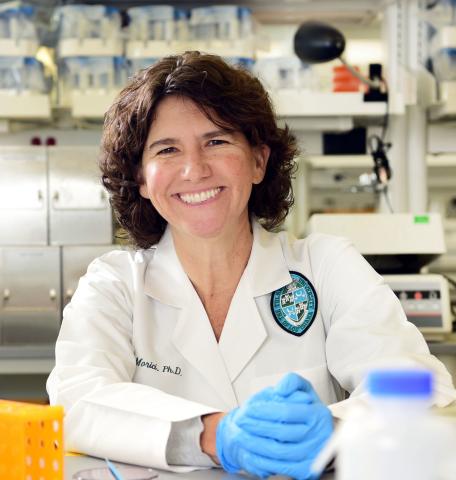Lisa Morici, PhD
Professor
Department of Microbiology & Immunology
Phone
504-988-1113
School of Medicine
Microbiology Immunology
TIPS Mentor
StARR Preceptors

Education & Affiliations
Ph.D. - University of California, Berkeley
Biography
RESEARCH FOCUS
- Eliciting Vaccine-Mediated Immunity against Difficult Infections. The majority of infectious diseases for which we lack an effective vaccine will require rational vaccine design and new approaches for eliciting protective immune responses. In order to achieve the best immunological response, a vaccine must induce antibody and T cell memory responses within the tissues most vulnerable to infection. My laboratory is addressing this challenge by examining the impact of adjuvant, route, and location of immunization on vaccine efficacy against difficult infections, such as those caused by Pseudomonas aeruginosa. We have shown that intradermal immunization with the ADP-ribosylating enterotoxin adjuvant, dmLT, can elicit protection against bacterial pneumonia in the lungs, demonstrating that delivering the appropriate adjuvant by the appropriate route can redirect immunity to the tissues where it is most effective. This work is significant because traditional vaccination strategies that utilized alum as the adjuvant and/or the intramuscular route of immunization failed to protect in similar studies. We are also using bacterial-derived outer membrane vesicles as adjuvants to improve the humoral and cellular immune response elicited by vaccination. Together with James McLachlan, we are working to develop next-generation adjuvanted vaccines for pertussis (NIH Adjuvant Dev. Contract 272201800045C) and Covid-19 (Fast Grant).
- Vaccine Discovery and Development. My laboratory has also pioneered the use of native outer membrane vesicles (OMVs) as multivalent vaccines for intracellular bacterial pathogens. In particular, we have developed a leading vaccine candidate for the Tier 1 select agent pathogens Burkholderia pseudomallei and B. mallei for the Department of Defense. As the inventor of this OMV vaccine, I have successfully moved the candidate vaccine from the discovery stage to its successful evaluation in both rodents and nonhuman primates. We are now working with industry partners for cGMP manufacturing of the OMV vaccine for planned Phase I clinical trials. I have served as the lead PI on two consecutive multi-year, multimillion-dollar DoD awards (HDTRA1-19-C0013; HDTRA1-14-C-0035) to support the OMV vaccine development and testing.
- Novel Approaches to Treat Bacterial Wound Infections. Treatment and prevention of infection with multidrug-resistant bacterial pathogens, such as Pseudomonas aeruginosa and Staphylococcus aureus, represents one of the greatest challenges in medicine. In particular, infection of medical implants is difficult, if not almost impossible, to overcome and is a formidable clinical challenge. We were among the first to demonstrate that surgical biological meshes, purported to “resist infection,” are highly susceptible to colonization with P. aeruginosa and S. aureus and subject to subsequent degradation and failure in vivo. These studies helped to elucidate why patients receiving biologic meshes in contaminated surgical fields (abdominal and pelvic repairs) experience graft failure and disease recurrence. More recently, we have turned our attention to combating drug-resistant wound infections. We are evaluating several alternative approaches, including microbicides, bacterial-derived vesicles, peptides, vaccines, and phage therapy, to treat and/or prevent P. aeruginosa, methicillin-resistant S. aureus, and Acinetobacter baumannii infections. Our work in this area is currently supported by the Department of Defense (Grant W81XWH2010071) and National Science Foundation (2012920 STTR Phase I to BioAesthetics).
